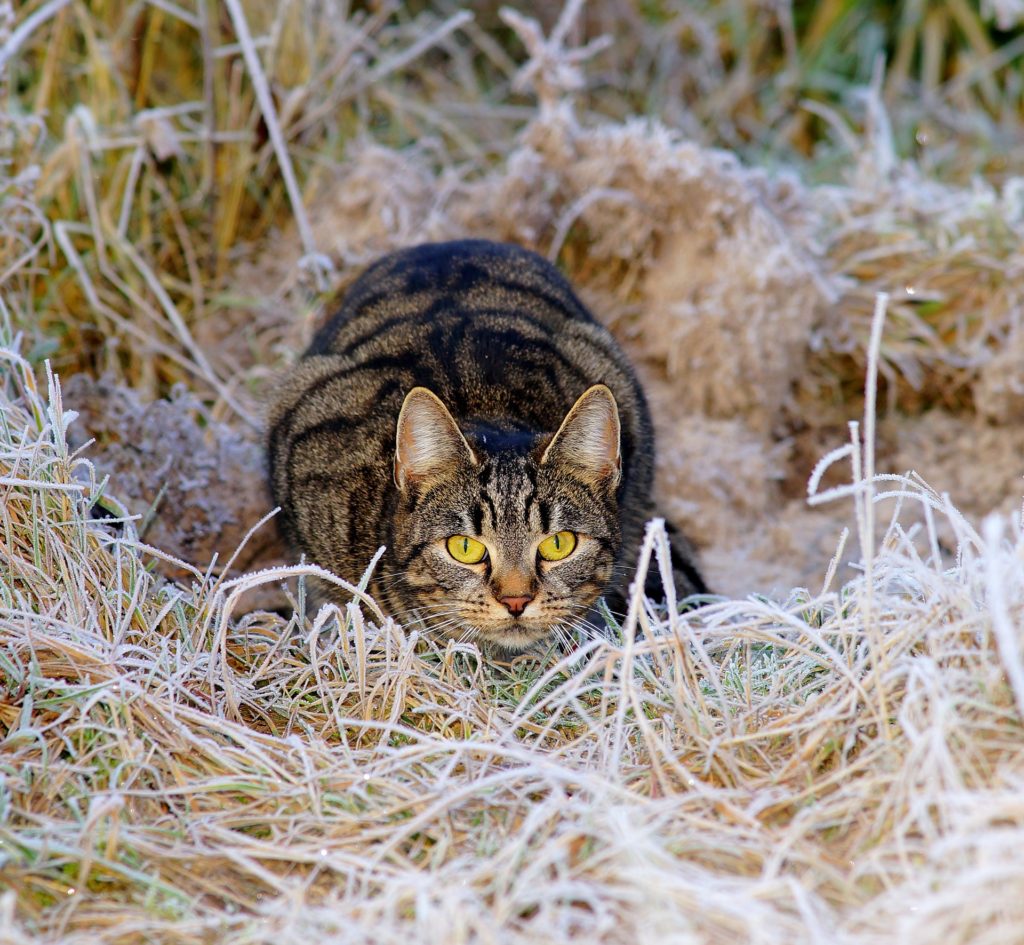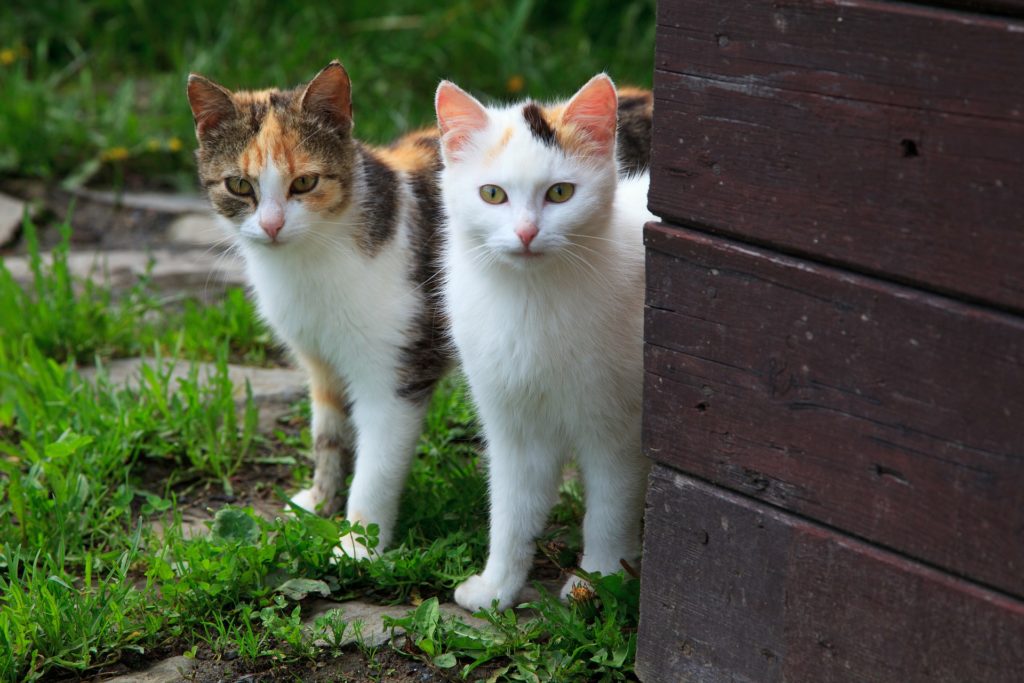The Pros and Cons of Outdoor Cats

If you have a cat and feel they should be allowed outdoors, there are some important pros and cons you should be aware of to keep your feline friend as safe as possible! There are also alternatives to having an outdoor cat because, in reality, the best way to keep your cat safe is by making them an indoor cat, which isn’t as hard as it sounds.
Pros
1) Outdoor Cats Get More Exercise
One of the most important aspects of any animals’ life is the amount of exercise they get. Exercise keeps them active, healthy, in good shape, and in a good mood. Cats love running around, chasing other animals, jumping up onto things, and climbing trees. Being an outdoor cat is great for all of these purposes and gives them fresh air while doing it.
Safe alternative:
A great alternative to letting your cat run around would be equipping your home with plenty of toys to keep them active. This can include battery-powered toys for chasing, high shelves to jump and perch on, tall scratching posts, and cat jungle gyms or towers. Playing with them every day will give them the exercise they need and love. Another opportunity to help your cat get exercise is by taking them on walks. Cats may be awkward at first on a leash, but training can turn them into leash walking pros in no time.
2) They Can Let Their Instincts Loose

Cats are natural predators. They love chasing and hunting, which is done most easily outdoors. With wide-open areas and things to chase, such as lizards, rodents, and birds, your cat will have a blast outdoors. However, this can be dangerous for other wildlife as well as your cat.
Safe alternative:
If you’d rather keep your cat safe indoors, consider some options for indoor predation instincts. Hiding treats in interesting places around the house will let your cat have the feeling of a great find when searching for the treat. Using toys that look like small animals for them to sneak up on can give them the same thrill. There is also the option of bringing another kitty friend home to hide from and playfully surprise attack.
3) Additional Stimulation For Your Cat
Your furry friend may get bored indoors. Cats love stimulating sights, smells, and sounds. Running outside lets cats satisfy their curious tendencies. They get the experience of living wild and free, while still having a loving home of shelter and food to come back to. Still, there are a multitude of options for keeping your cat stimulated without letting them run entirely free.
Safe alternative:
If your home has a balcony or porch, these are perfect spots to let your kitty hang out. It gives them the ability to be outside while in the safety of a closed or some-what isolated area. If you don’t have either, there are cat playpens with netting that you can put in your backyard for your cat to play in. If an outdoor area isn’t an option, window perches are a great way to let your cat get a birds-eye-view of the outdoors. Opening the window to let them sit near the screen lets them catch the breeze too.
Cons
1) Outdoor Cats Have a Lower Life Expectancy
If you love your furry friend and want them to live the longest life possible, keeping them indoors is the way to go. While indoor cats can live an average of 17 years, outdoor cats have a life expectancy of under five years.
The reason for this is because outdoor cats are more prone to injury or illness. Cars are the highest killer of cats. If a cat decides to run across the road, some people either won’t see them or won’t care enough to slow down. During cold weather, cats are known to curl up inside car engines to keep warm, which can seriously injure or kill them. Cruel people also play a big role in outdoor cat deaths because stray cats can be seen as a nuisance if they’re digging in a yard or meowing loudly by someone’s door. Lastly, wild animals pose a threat if they are territorial or simply aggressive in general. These animals can include raccoons, dogs, foxes, coyotes, and other cats.

Temperature plays a big role in outdoor cat safety as well. Outdoor cats have the potential of getting hypothermia and frostbite during cold weather. On the other hand, if it’s extremely hot outside, your cat can overheat, have heatstroke or heat exhaustion, along with becoming dehydrated.
Additionally, there are many poisons littered throughout neighborhoods, some purposefully and some accidental. People treat their lawns with pesticides, they also put out rat poison, and other substances, such as antifreeze, fertilizer, and compost bins, which can all affect your little one.
2) Outdoor Cats are More Likely To Get Lost, Trapped, or Picked Up As a Stray
Cats love to explore and venture into unknown places. This can include garages, abandoned houses or buildings, other people’s back yards, and much more. It’s easy for a cat to get lost, especially if a bigger and more aggressive animal chases it off. There is also the possibility of them getting trapped in a closing garage or anywhere they were able to squeeze inside of but maybe can’t get back out.
Additionally, if your cat doesn’t wear a collar when it roams the streets, people may think it’s a stray. This can lead to them capturing your cat in an attempt to turn them into a shelter unless said person wants a new pet and accidentally steals your cat. These are common occurrences and might lead to euthanasia or relocation if you’re not careful.
3) Outdoor Cats Are More Likely To Get Sick
Not only can cats get fleas, ticks, and mites, but they also can get parasites, rabies, worms, and more. Some diseases spread by contact include feline AIDS (FIV), feline infectious peritonitis (FIP), Feline leukemia virus (FeLV), Feline Distemper (FPV), Toxoplasma gondii, and upper respiratory infections. Feline leukemia virus is one of the most common cat diseases and can be spread through almost all bodily secretions. Feline distemper is a contagious and deathly disease among cats, and, like FIP, is not possible to test. Toxoplasma gondii is a parasite spread by cats, which can cause neurological, reproductive, and respiratory problems in humans, cats, and other wildlife.
If you want to allow your cat to be outdoors, make sure to implement these safety measures first!
1. Spay Or Neuter Your Cats

If you decide to let your cat be an outdoor cat, you should make sure they are spayed or neutered. With the stray cat overpopulation already being so high, it’s best to avoid your cat contributing to this problem by getting them fixed.
2. Microchip Your Cat And Make Them Wear A Collar
Cats without collars may be seen as strays. To avoid this, giving your kitty a collar with a tag containing your name, phone number, and address will show they have a home already. Adding a bell allows you an easier time tracking them if they are missing, as well as giving warning to wildlife they may try to hunt. Breakaway collars are advisable in case your kitty climbs up a high tree and the collar gets caught or is trying to escape an enemy. Always invest in a microchip too which a vet can scan to reveal your name, address, and phone number for further contact.
3. Check Your Cat Regularly
Examining your cat once it comes home is very important. A thorough exam can reveal any painful bumps or scratches that can lead to viruses and diseases. You can also discover ticks and fleas. Prevention for these aspects includes making sure your furry friend is always up to date on vaccines and is using flea and tick medication.
No matter what choice you make for your cat, taking safety precautions will benefit you and help your cat lead a longer, healthier life. Always keep their best interest in mind when considering whether to keep them indoors or outdoors. Don’t forget, there are many alternatives to creating a fun indoor space for them that is much safer than the outdoors!
